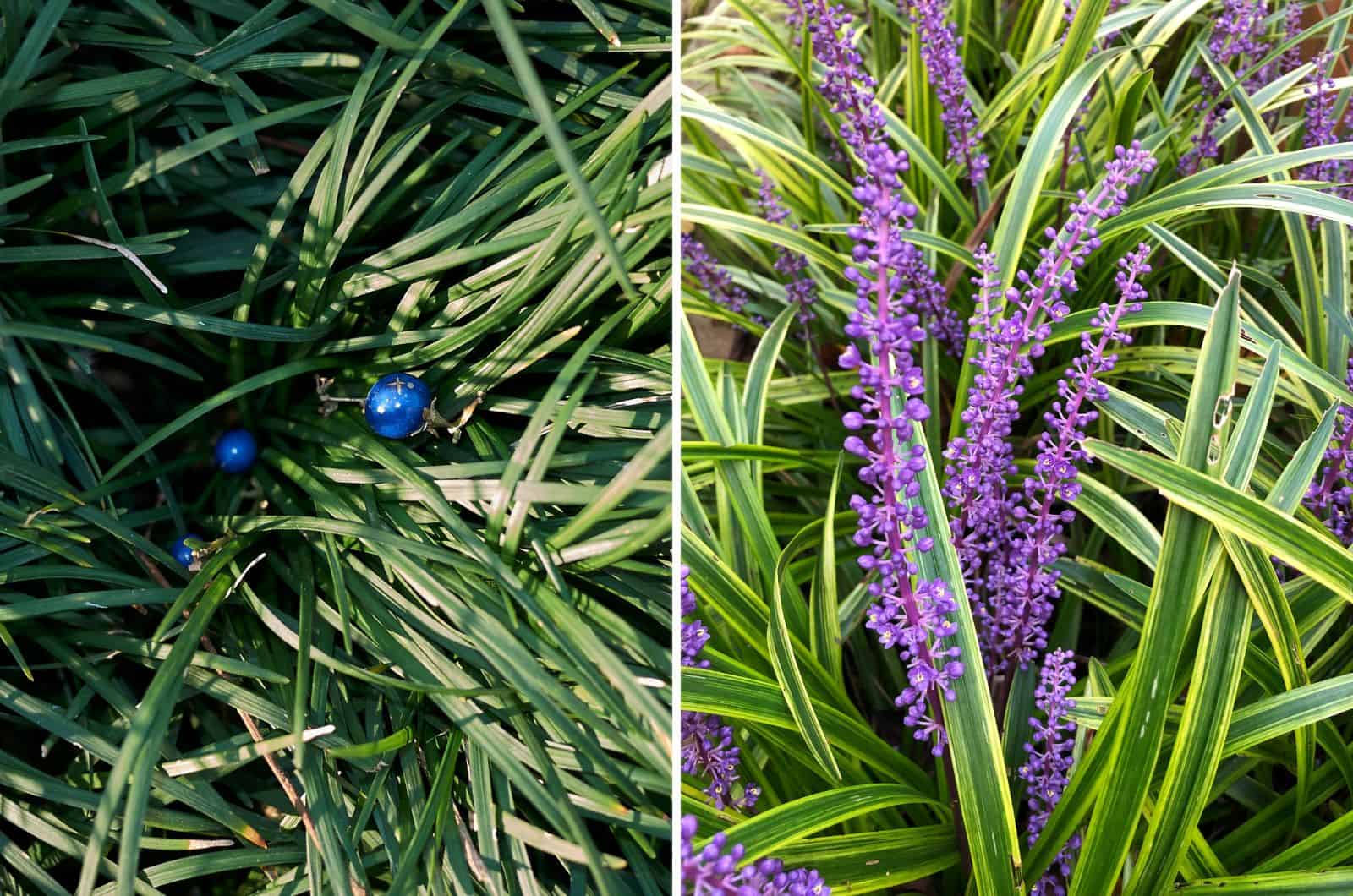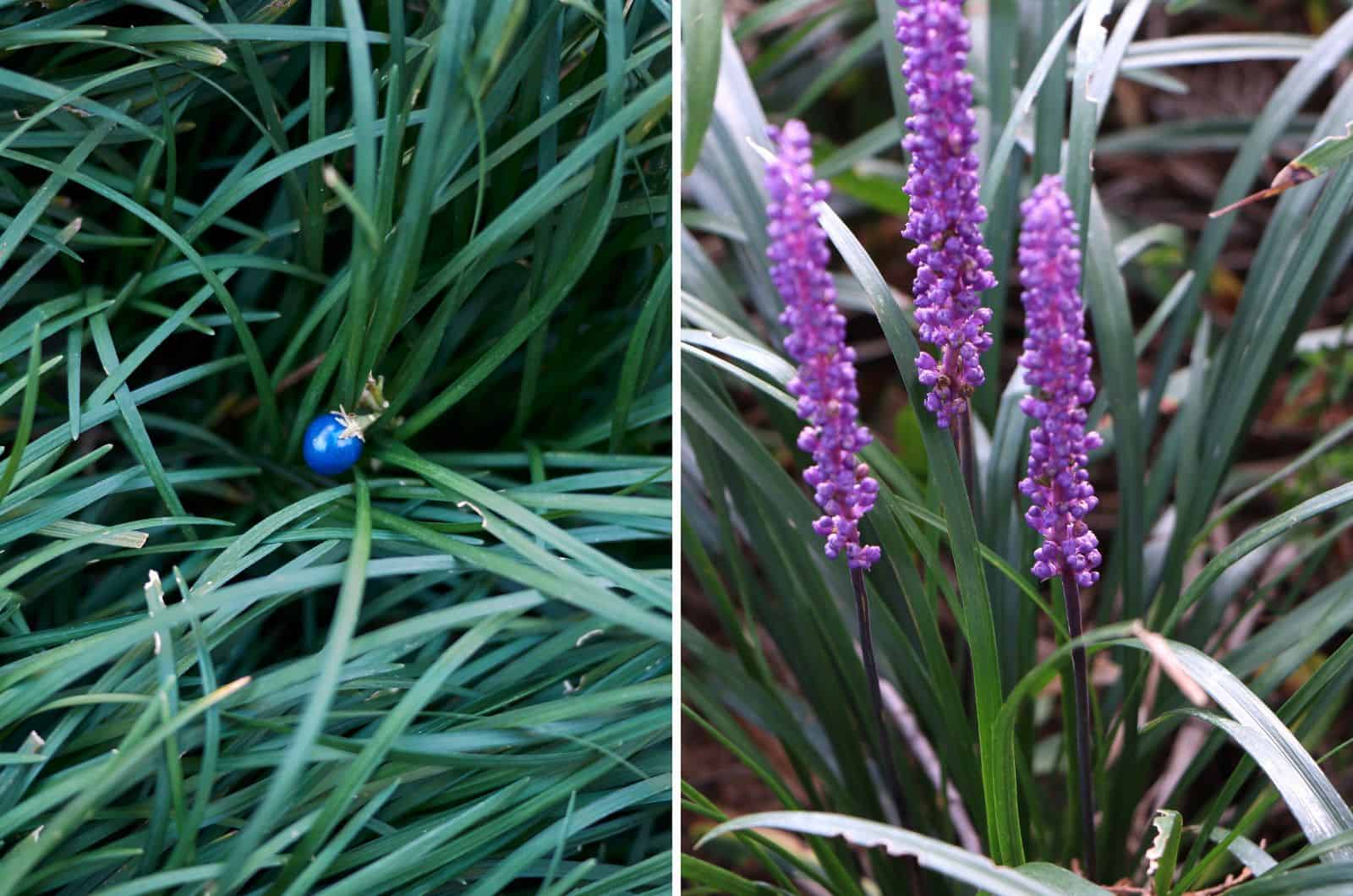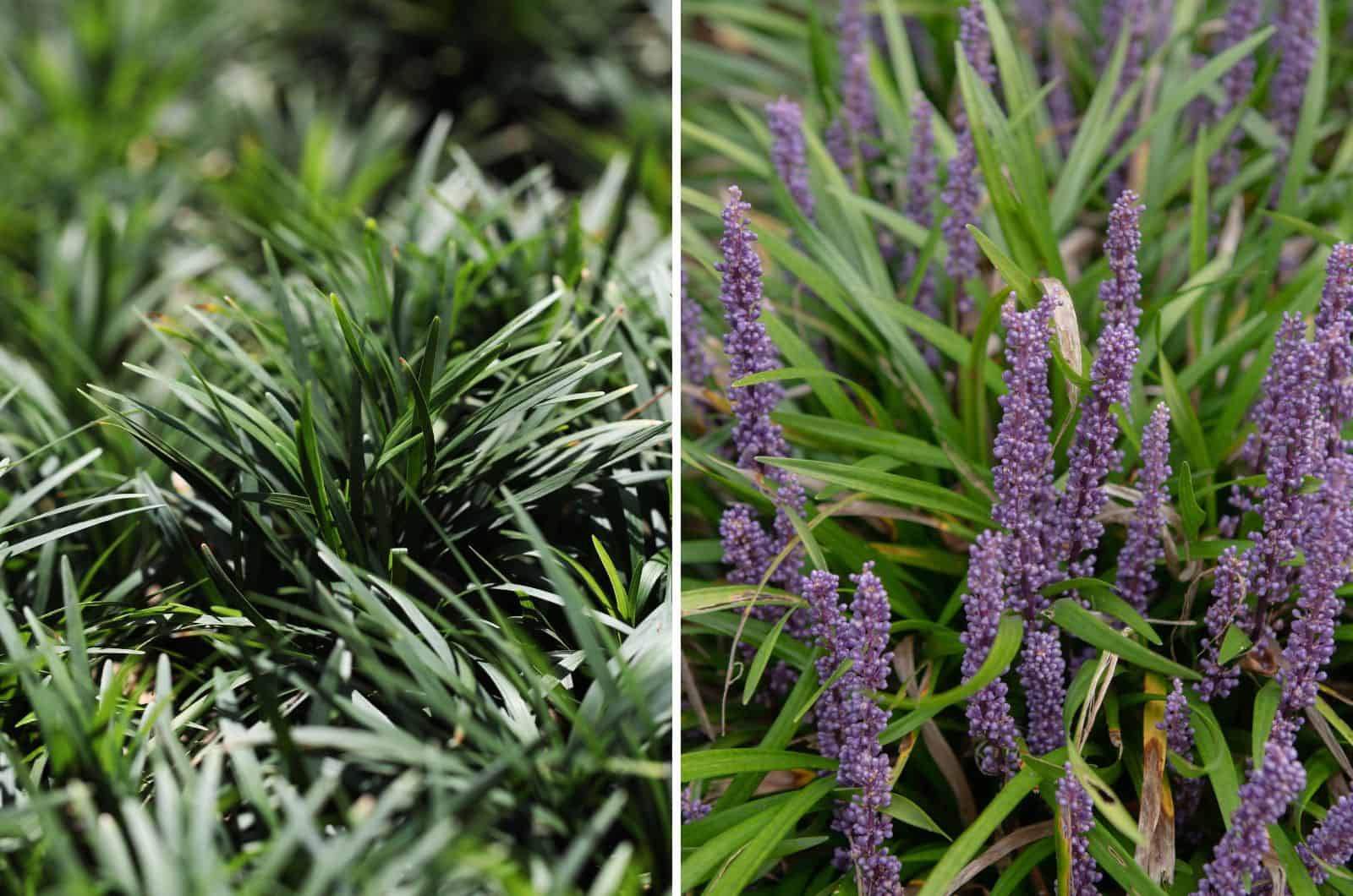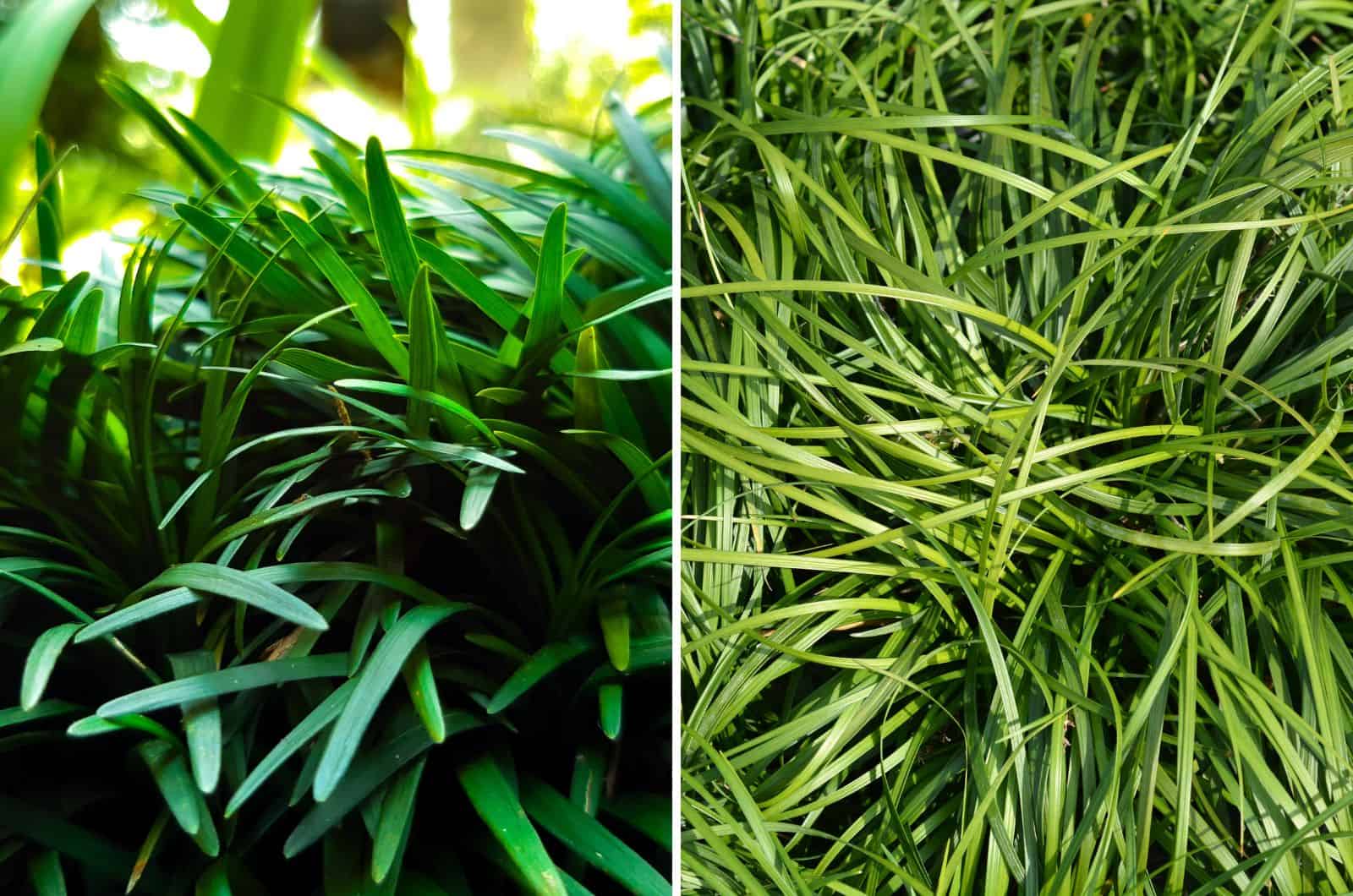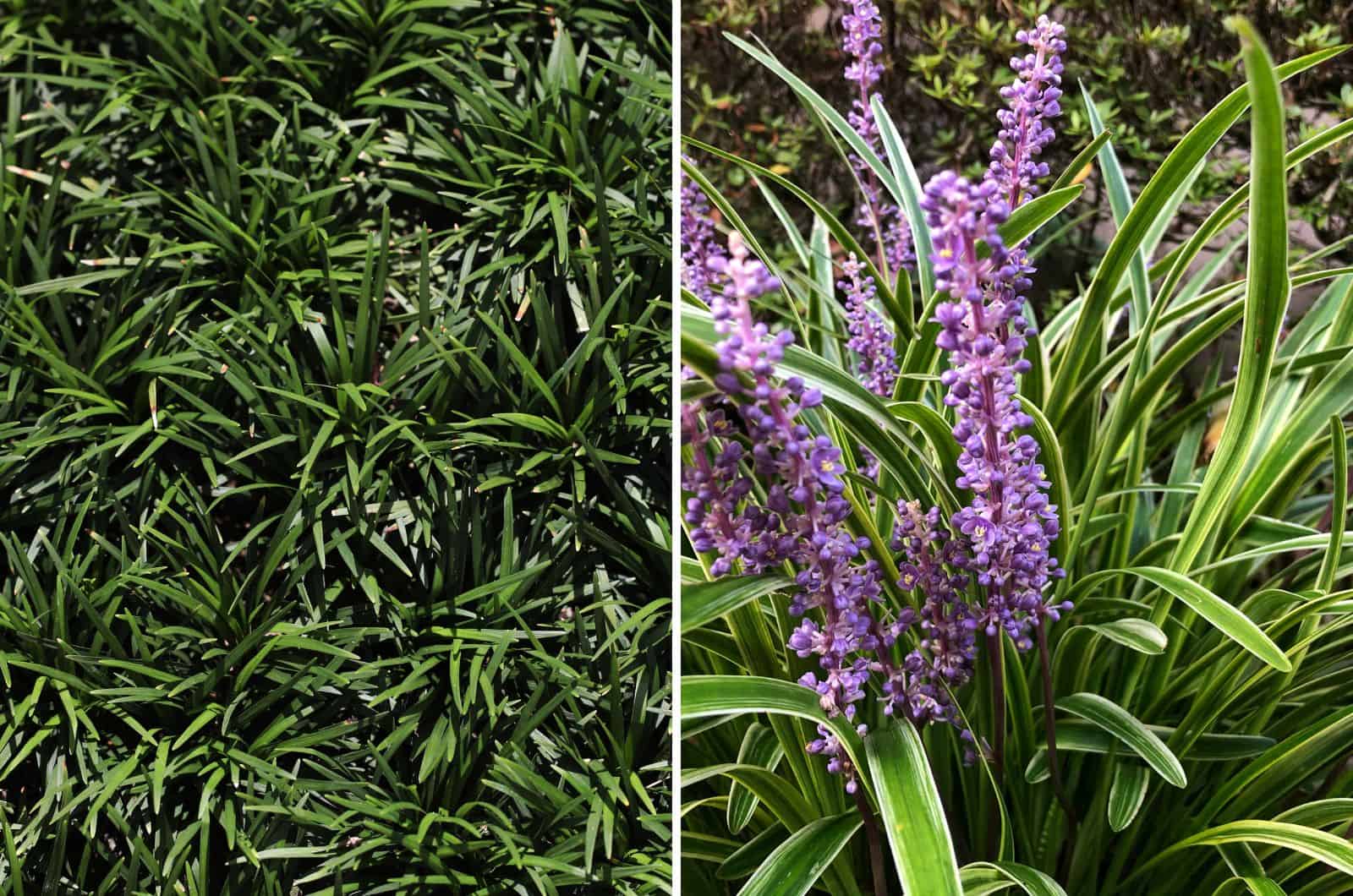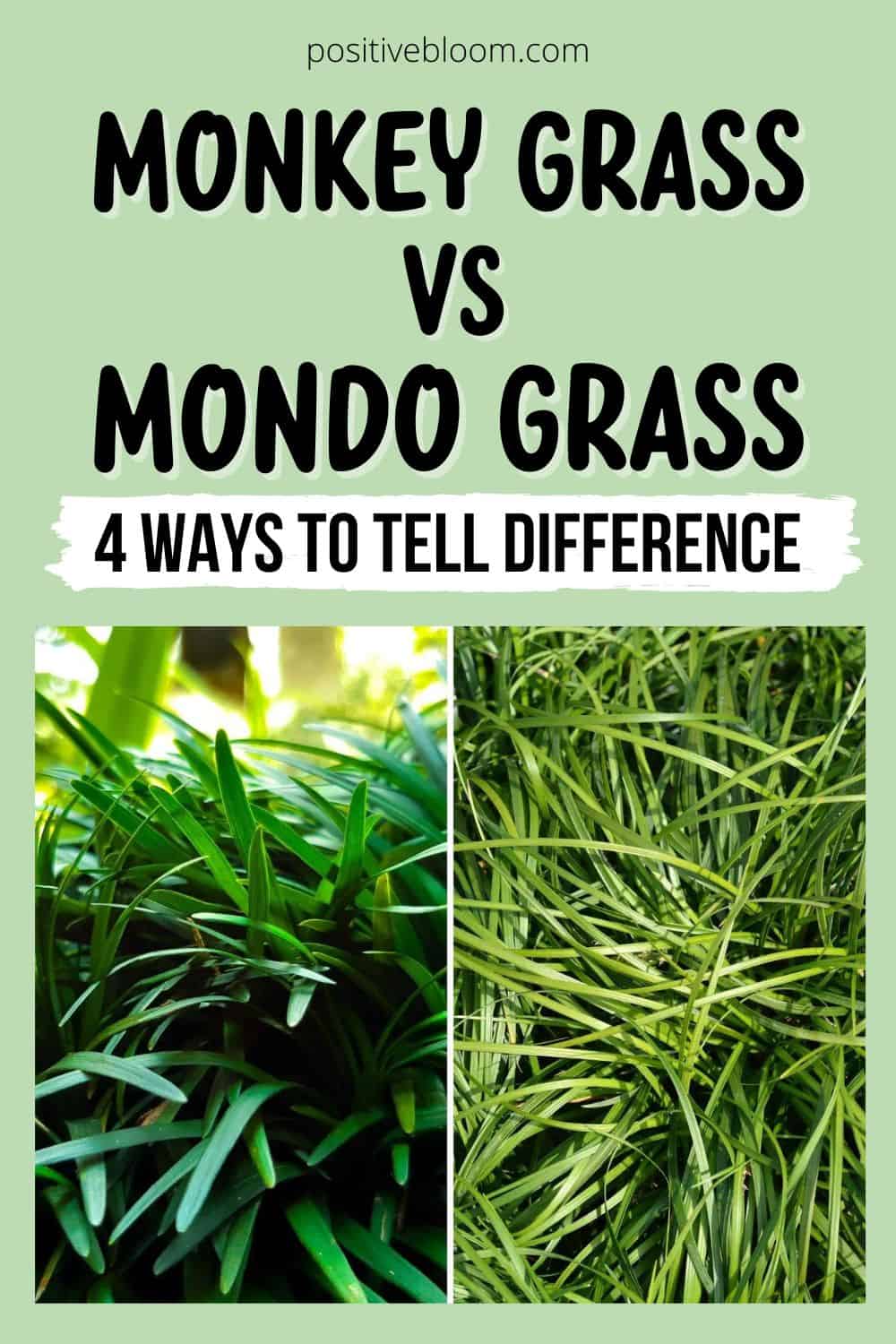The differences between monkey grass vs mondo grass aren’t always clear at first glance. However, the more you look, the more different these grasses become.
The main difference between them is their size, but you can also tell them apart by carefully inspecting their leaves.
Even though they have virtually the same care guides, they don’t handle the heat, drought, and cold in the same way.
Monkey and mondo grass do have some similarities; they need the same care, are afflicted by the same pests and diseases, and even have similar uses.
Both of these grasses are perfect for cool and mild climates, and you won’t make a mistake by choosing either of them.
Before we continue talking about these plants, take a look at their differences and similarities in the table below:
[table id=207 /]
Monkey Grass vs Mondo Grass
Monkey and mondo grasses are quite different, and they even come from different families. Monkey grass belongs to the lily family and is also known as lilyturf, big blue lilyturf, or even border grass.
On the other hand, mondo grass is a member of the Asparagus family and is spelled either mondo grass or mondograss.
There are some other things that divide them and help us decide which one to use as a groundcover to decorate our walkways.
Size
The main difference is in their size. Monkey grass is usually between 1-2 feet tall and can spread up to 12-18 inches.
However, mondo grass is low-growing and doesn’t extend more than 6-10 inches. There are many dwarf varieties that don’t grow taller than 2-3 inches.
Varieties
There are two types of monkey grasses with completely different growth habits. Liriope muscari is a clumping variety, and it’s highly unlikely you’ll mistake it for mondo grass due to its broad leaves and clumps.
However, Liriope spicata is a spreading member of the lily family and is quite similar to mondo grass. Still, their leaf shape, flowers, and the color of their berries help us distinguish between them.
Also, monkey grass doesn’t have dwarf varieties. The short lilyturf is called Liriope muscari ‘Silver Midget,’ but its 10-12 inches make it anything but a dwarf.
Meanwhile, there is a dwarf mondo grass called Ophiopogon japonicus ’Nana’ that usually grows up to 3 inches tall. There are three varieties of mondo grass: green mondo grass, black mondo grass, and dwarf mondo grass.
Color
If you have green mondo grass and almost any type of monkey grass, you might not see any difference, although mondo grass is typically a darker shade of green.
However, there is black mondo grass called Ophiopogon japonicus ‘Nigrescens,’ whose deep green foliage looks almost black in the sun and certainly cannot be mistaken for the green leaves of monkey grasses.
Finally, there are variegated liriopes and ophiopogons that can take your landscape design to a whole other level. Liriope muscari ‘Aztec’ is a cultivar with silver streaks on bright green leaves, ideal for edging due to its toughness.
Ophiopogon japonicus ‘Variegata’ is another bicolored grass-like plant that sets itself apart from other varieties due to its irregular white variegations.
Blade Width And Growth Habit
Homeowners adore these low-maintenance, ornamental grasses because they are hardy and look stunning.
They might appear the same to the uneducated eye, but they are completely different species, and their blades show us just that.
The leaves have the same shape, but monkey grass generally has broader leaf blades than mondo grass.
The blades of mondo grass usually droop, while monkey grass grows upright.
Therefore, monkey grass looks much like your every-day turfgrass, whereas mondo grass is usually more rounded.
Flowers And Berries
If you’re not sure whether you have planted mondo or monkey grass, you should always examine their flowers because that’s where they differ the most (in addition to their size, of course).
Monkey grass has long, boastful flower stalks rising above neat clumps, whereas the humble stalks of mondo flowers remain hidden in the bushel.
Monkey grass usually bedecks itself in lavender and purple flowers, whereas mondo grass usually hides timid white flowers between its blades.
However, there are monkey grasses with white flowers and mondo grass varieties with lilac blooms, so don’t be surprised if you come across a type like this.
Their blooming time also differs; Liriope usually flowers in mid-summer, from July to August, while the ophiopogon blooms in late spring or early summer.
Finally, the color of their berries is another thing that can help you distinguish between them. Mondo grass has blue berries, whereas the berries of monkey grass are usually black.
Tolerance
Even though both of these grass types have similar needs, their tolerance of inadequate conditions isn’t the same.
For instance, monkey grass is more heat and drought-tolerant than mondo grass. Both of them can grow in full sun conditions, but mondo grass is a bit more sensitive to higher temperatures and light exposure, so it can get burned if you don’t shelter it.
However, monkey grass is only an evergreen perennial in southern areas and it can get discolored in cold weather and turn yellow, so you should cut it back in late winter or early spring to get rid of the unsightly foliage.
The important thing is to remove the old leaves before the new growth appears to prevent the possible spread of diseases and pests.
You should mulch your monkey grass with shredded bark to protect it from the harsh cold and keep the pests at bay.
On the other hand, mondo doesn’t require trimming as it won’t turn yellow unless the winters are extremely harsh, but you should still mow it once in late winter to incite healthier growth and prevent the spread of insects and infections.
It also doesn’t need mulching, but it definitely benefits from it, and you won’t have to treat it with pesticides too often either.
Monkey Grass vs Mondo Grass: Similarities
Even though we now know they have plenty of differences, monkey and mondo grasses also have a lot in common.
They have the same needs, are susceptible to the same pests and diseases, and even have the same usages.
Read on to learn more about their similarities and the best places to plant them.
Care Guide
Their needs are the same, so you should plant them in locations with partial shade and in well-draining soil.
However, these aren’t the only requirements of these ornamental plants, so stick around to learn more about them.
Light Requirements
Both of these grasses can thrive in full sun to full shade conditions, which makes them an ideal addition to your landscaping design.
However, you do need to protect them from too much light if the weather is scorching.
Sunlight is essential to their coloring, however, which won’t be as vivid if you grow them in full shade.
Water And Humidity
Mondo and monkey grass require little maintenance and just a small amount of water. However, you should water them at least once a week or even more if the temperatures are high.
Monkey grass can go a bit longer without water, but it still needs to be watered at least every ten days once it’s established.
The best way to tell when they need more water is by checking the soil every now and again. If the top one or two inches are dry, you should give your grasses something to drink.
Humidity
These plants prefer moderate humidity levels, but they can survive in higher humidity.
If you live in a region with high humidity, plant these grasses in partial shade and don’t water them too often because you don’t want overwatering to lead to root rot.
Temperature
Both grasses prefer mild temperatures and thrive between 65-75°F.
However, they can survive harsh winters, and mondo grass can even handle temperatures as low as -10°F. Monkey grass isn’t that tolerant, but it can survive incredibly low temperatures as well (approximately 0°F).
Soil And Fertilizer
Both of these grasses prefer slightly acidic and loose soils with good drainage. Loam-based compost is an excellent way to enrich the soil with the necessary nutrients, improve the aeration, and provide the drainage these plants need.
They cannot tolerate overwatering, so well-draining soils are essential. However, even though they prefer good drainage, there shouldn’t be too much of it. Sandy soils don’t have enough nutrients and the water seeps right through, so your plant really receives no benefits from it.
On the other hand, heavy clay soils make it nearly impossible for the root system to develop and spread so your plant will be deprived of nutrients.
Fertilizer
These grasses don’t require too much fertilizer, but will still benefit from occasional feeding. The main thing is to find a fertilizer that meets all your plant’s needs, so always make sure to test the soil and see which nutrients the plant might be lacking.
However, if you’re looking for a general fertilizer, then triple 10 is the best option because it’s neither too strong nor too weak.
You can apply this slow-release fertilizer twice a year, once in spring and then again in the summertime, but make sure to follow the instructions on the back.
Always (and I mean always) water the plants thoroughly after feeding them to avoid any fertilizer burn and increase absorption.
Propagation
Both types of grass can be propagated in the same way – by division. Below you will find our step-by-step guide for multiplying these plants.
Step 1. Once spring arrives and all danger of frost has passed, dig up the plants you want to propagate.
Step 2. Carefully lift the ornamental grass and try to preserve as many roots as possible.
Step 3. Remove the dirt around the root system, divide the plant into smaller parts, and cut them with a sharp, sterilized knife. It doesn’t matter how big the sections are as long as they have roots and between 8-10 leaves.
Step 4. Now all that’s left is to plant the sections. Dig some holes deep enough for the roots to fit and make sure the leaves are above the soil level.
You should divide your monkey and mondo grass once every three years to ensure proper growth.
Pests And Diseases
The good news is that these grasses get afflicted by the same pests and diseases, so you can treat them with the same things.
The most common pests that nibble on these grasses are slugs and snails. They usually appear if there’s too much mulch around your plant, so don’t go overboard.
You should set traps for them and eliminate them if you don’t want to be left with just a few leaves on your plants!
The most common disease that affects these plants is aranthnose, which is a result of wet leaves for an extended period either because of rain or overhead watering.
This fungus can even overwinter, which is why it is essential to cut back the old growth in late winter so that the new leaves don’t get infected as well. You can recognize it by brown-red spots on leaf tips and edges.
The good news is that you can treat it with a fungicide if caught early. Experts recommend using Bacillus subtilis at the first sign of this infection. Simply follow the instructions and you’ll save your plant.
Usage
Even though they’re called grasses, neither mondo nor monkey grass can tolerate heavy foot traffic. Still, you can always plant them between cracks, surround your patio with them, or along the edges of your flower beds and walkways if you simply must have them.
These edging plants can accentuate just about anything, and if you’re still weighing the pros and cons of a pea gravel patio, know that this plant complements it perfectly.
However, if you prefer stepping stones you can plant either of these grasses and transform your backyard into a green cloud with levitating stones.
Frequently Asked Questions
We still haven’t covered everything about these two kinds of grass, so we will now answer some of your most commonly asked questions in the section below.
Is mondo grass invasive?
Mondo grass can quickly become invasive, especially in the south where the conditions are ideal.
It is hard to get rid of it, and you’ll have to turn to herbicides and weed killers if you want to liberate your courtyard.
Is mondo grass poisonous?
No, mondo grass isn’t toxic, but your pets shouldn’t be eating it either. It can cause irritation and gastrointestinal issues such as upset stomach and diarrhea.
Keep your pets away from this plant if you don’t want unnecessary and easily avoidable visits to the vet.
What are the benefits of mondo grass?
There are many health benefits of mondo grass. It has anti-inflammatory and anti-cancer properties, boosts your immune system, and has many benefits for treating diabetes and improving blood flow.
You could even treat a cough with this plant as it reduces inflammation of the lungs and encourages the production of mucus.
Is Liriope invasive?
There are two types of liriope – Liriope muscari and Liriope spicata, but only spicata is considered invasive.
It spreads through underground stems called rhizomes. However, it isn’t invasive in all territories; only where it has ideal growing conditions.
You can always divide it on time or treat it with herbicide if it ever comes to that.
Wrapping Up
This article examined the differences and similarities between monkey grass vs mondo grass. Even though they look pretty similar, you can differentiate them according to their size, growth habit, color, and blade width.
They are similar in all the important things: their usage and care guides. Therefore, you can grow both of these grasses at the same time if you can’t decide which one you prefer.
Happy planting, and until next time!
Like this post? Share or pin it for later!

